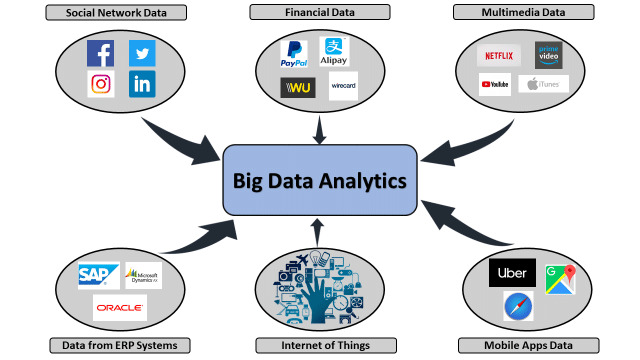
As the digital age has evolved, the amount of information transmitted and received daily has also increased. From this the term ‘big data’ has emerged – a name coined to describe the high volume of data obtained and recorded from a diverse variety of sources. It represents a lot of opportunities for enterprise IT; however, it also represents a lot of potential pitfalls and distractions that can lead to several failures. Consequently, enterprises are having to change and develop processes to accommodate the implementation of big data.
How Big Data is Changing Enterprise IT
Big Data: Creating Big Opportunities
One of the biggest lessons learned from big data is one of caution. My time working at MIT in AI and machine learning research involved working with big data before it became a mainstream concept. During this period, my boss used to say if Newton could solve with pen and paper, so can we. This proved to be true in many ways as, during my time, there was only a single instance where a supercomputer needed to solve a problem. More often than not, solutions are found and modelled in a closed-form fashion from a laptop.
Of course, this isn’t to say that big data hasn’t got a place within enterprises and enterprise IT systems. Some of the best technologies for things like real-time video analytics created using it. The question is, however, is it always necessary? If used incorrectly, big data can be an expensive and uncontrollable investment. While big data presents a lot of opportunities for success, it also creates a lot of opportunities for failures.
Big Data Scepticism
When it comes down to it, the most effective changes enterprises should be making is to be more selective, cautious, and strategy-oriented when it comes to implementation.
Even though it is available for use within enterprise IT systems, that doesn’t mean it always needs to be. Instead, enterprise leaders should be asking themselves where they should not be implementing AI, machine learning are to yield the best results.
To be successful with big data. An enterprise should look towards implementing it only within the areas that withstand testing. Challenging teams to understand that closed-form solutions still hold a lot of value because they represent a fundamental understanding of the problem you are trying to solve. one-size-fits. Too often we ask the wrong questions to the answers we seek, and big data can’t solve that for you. [VD1] What enterprises should be realizing during this advent of big data is that it isn’t a miraculous one-size fit all solution. It’s another tool that is used where appropriate. In most cases, a more effective solution can be found within the existing IT infrastructure.
Avoid the Pitfalls of Big Data
An organization needs to make sure they are doing the right things with big data. Instead of implementing it simply because it’s available to them. At the end of the day, even though it can be a useful tool. It can very quickly become expensive and grow out of control.
One of the most apparent problems with it is that, even though organizations have access to all of this information. The majority of them have no idea what to do with it. To combat this, the best first step of any enterprise should be to aggregate and hold on to their data. Ensuring it can use accurately and effectively in the future. In machine learning, there is the principle of ‘garbage in = garbage out’. This essentially means, if bad data is going in, you’re going to get bad data coming out. In other words, the only way you’re going to be able to create 5 years’ worth of training data on something. Is to collect data for 5 years. Enterprises are having to learn and prepare because of this.
How Is It Changing Enterprise IT?
Today, big data is creating a challenge within organizations. Enterprises need to start to create business cases before the application exists, which is ultimately a difficult task. To do this, they need to start figuring out which information will be useful to use later down the road. Alongside this, organizations also need to be discerning about what to do with and how it can utilize.
Overall, the most important takeaway for organization leaders is to be very selective in terms of which areas to roll out big data. And as this happens, teams should look more towards using closed-form solutions within their existing infrastructure to solve problems. [VD2]
The Future Of Big Data In Enterprises
Big data isn’t the solution to every problem, and enterprises are slowly starting to learn and adapt to this fact. Organizations need to be smart before they head off on a wild goose chase because. The fact is. Big Data involves just as many challenges for the uninformed as it does opportunities for the discerning organization. Looking ahead, it’s fully expected that we will see tons of money wasted and many failures. Alongside a select few organizations that will come out way in front of their peers by embracing and implementing it in the right way.
Organizations need quality data that they can use for their Big Data and Machine Learning methods. That is where PromptCloud comes in where you can submit your requirement and just sit back and enjoy the data being fed into your servers.
This article contributed by TRG Datacenters, the first datacenter to make colocation easy, fast, and reliable




















